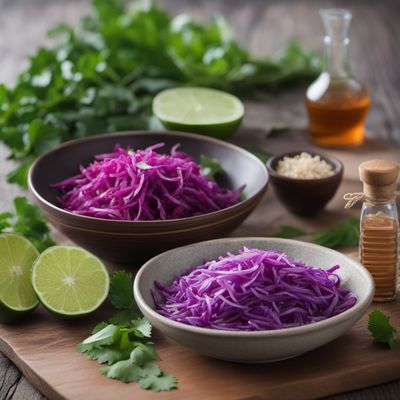
Ingredient
Lupins (dry)
The Mighty Legume: Lupins
Lupins are small, oval-shaped legumes that come in various colors, including yellow, white, and blue. They have a firm texture and a slightly nutty flavor. Lupins are often used as a substitute for soybeans and are commonly found in Mediterranean and Latin American cuisines.
Origins and history
Lupins have been cultivated for thousands of years and have a significant cultural and historical significance. They were first domesticated in the Mediterranean region and were a staple food for ancient civilizations. Today, they are widely grown in Australia, the Mediterranean, and South America.
Nutritional information
Lupins are a nutritional powerhouse, packed with protein, dietary fiber, and essential minerals such as iron, magnesium, and potassium. They are also low in fat and contain no cholesterol. A 100-gram serving of lupins provides approximately 371 calories.
Allergens
Lupins are known to cause allergic reactions in some individuals, particularly those with peanut allergies. It is important to exercise caution and consult with a healthcare professional if you have any known allergies or sensitivities.
How to select
When selecting dry lupins, look for ones that are plump, uniform in size, and free from any signs of moisture or mold. Avoid lupins that appear wrinkled or discolored. If purchasing lupins in a can or jar, check the expiration date and ensure the packaging is intact.
Storage recommendations
To maintain the freshness and quality of dry lupins, store them in an airtight container in a cool, dry place. Avoid exposure to moisture, heat, or direct sunlight, as these can cause the lupins to spoil or lose their flavor. Properly stored, dry lupins can last for up to a year.
How to produce
Lupins can be grown in home gardens, provided they have well-drained soil and receive full sun. They can be sown directly into the ground or started indoors and transplanted once the seedlings are established. Lupins require regular watering and benefit from the addition of organic matter to the soil.
Preparation tips
Before using dry lupins, they should be soaked overnight to soften them and remove any bitterness. After soaking, rinse the lupins thoroughly and cook them in boiling water until tender. They can be used in a variety of dishes, including soups, stews, salads, and even baked goods. Lupin flour, made from ground lupins, is also a popular gluten-free alternative in baking.
Culinary uses
Dry lupins are commonly used in Mediterranean and Latin American cuisines. They are often added to soups, stews, and salads for added texture and flavor. Lupin flour is also used as a gluten-free substitute in baking, providing a nutty taste and a moist texture to breads, cakes, and cookies.
Availability
Lupins are commonly cultivated in Australia, the Mediterranean region, and South America.






